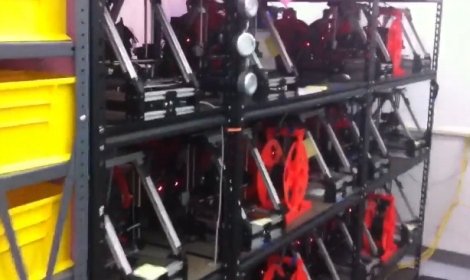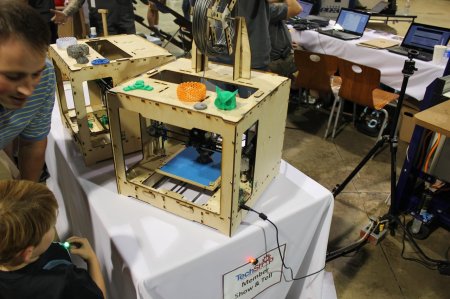
Take a minute to think about what your dream job might be.
Done imagining you are a ridiculously wealthy bachelor? Good.
Back here in the real world, [Caleb Cover] has come into what might be one of the coolest hacking-related jobs we’ve seen in awhile. He recently snagged a gig working for Aleph Objects as the fleet master for a large array of 3D printers. His duties include the care and feeding of 30 MiniMax-style repraps, a job description we sure wouldn’t mind having.
Aside from merely gloating about his newfound employment, [Caleb] wrote in asking if we knew of a reprap setup larger than the one he is responsible for. We couldn’t come up with one, but perhaps you can.
Right now, [Caleb] says that he’s working on seeing how well the machines can produce parts to replicate themselves, which will certainly make this the largest collective set of production 3D printers sooner or later.
While you hunt down other large reprap setups at your monotonous desk job, check out the video below to hear the symphony of 3D printing that greets [Caleb] at the door each day.
Think you might have seen a 3D printing setup more massive than this one? Pics Vids or it didn’t happen. Seriously, we want to see em!
Continue reading “Help Us Decide If This Huge Reprap Array Is The Largest Fleet To Date”

















